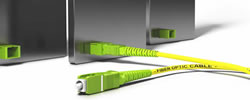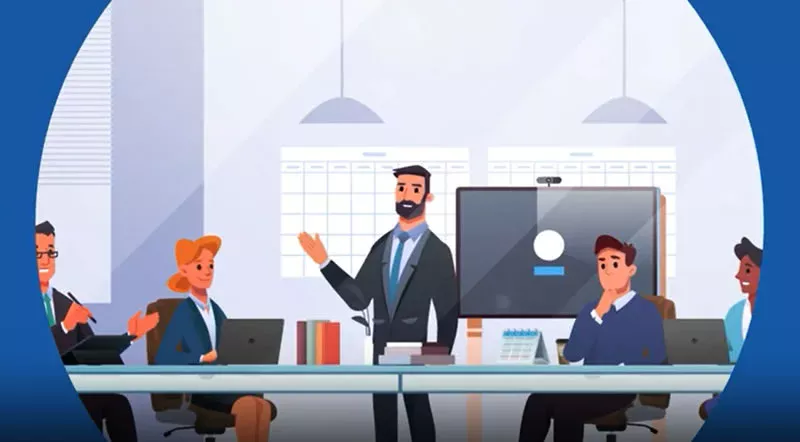Market Segments
While there is a common need across multiple types of businesses to test Customer Premise Equipment (CPE), each type of business has special testing needs. Generally speaking, the main categories of broadband device testing industries are Network Operators, device refurbishment & resale firms, 3rd Party Logistics companies and Lab testing environments.

Cable and Telco Operators
In the case of the network operators, such as cable operators (MSOs) or Telephone companies (Telcos) they have some unique goals in their testing processes. These operators are either providing full installation services for their customers, meaning that they are sending a truck to the customer location and performing a full installation of a video or data CPE, or they are packaging the equipment into a “self-installation” kit and sending it for the customer to install themselves. With the COVID-19 pandemic, self-installation has become the preferred method. Whether a “truck roll” sends a technician to the home or the customer is installing the CPE device themselves, there are similar goals in testing:
- The device should be ready to be installed without additional steps, like firmware upgrades being necessary at the time of install. This reduces the time and cost of a technician installation, and the frustration level of a customer installation. If a firmware upgrade takes place during the installation, it can add up to 15 minutes to the process. Therefore, the ability to perform a firmware upgrade during testing is critical.
- The device must be functionally tested in full, so that the CPE works as the customer will use it when it is installed. A functional test includes validating that the device works properly with the “customer firmware” installed, since this is how the device will be used in the customer’s home. A functional test is different from a lab or certification test. This test assumes that a device model has been qualified as functional, along with the customer firmware.
- Due to the large volume of devices being recycled and reissued to customers, the operators must have the minimum test cycle time to process large numbers of devices. This means that the test should be concise enough to process CPE quickly, but complete enough to satisfy the needs in #2 above.
- Along with large volumes, a broadband provider often offers a large variety of device models and technologies. In this case, operators need to have a common platform to test as many technology types as possible. This can include different types of set-top-boxes, DSL, FTTH, DOCSIS, Wi-Fi routers and even Powerline devices. These devices all need to be functionally tested thoroughly and in volume.
- Advanced technology capabilities, such as Wi-Fi 6, DOCSIS 3.1 and multi-gigabit speeds are also likely requirements of the system operators. They must be sure that advanced customer devices work flawlessly with the CPE being provided to their customers.
Along with these items, as Wi-Fi is the most common way customers are now connecting to the Internet, advanced Wi-Fi testing, beyond basic connectivity testing, is generally desired. In a busy warehouse environment, this Wi-Fi testing should be in the form of shielded testing, to minimize the interference of nearby devices when performing Wi-Fi bandwidth testing.
Overall, a broadband provider’s CPE testing needs are focused on a complete functional test of the widest variety of devices tested in the shortest amount of time. Meeting all of these requirements can be a daunting task.
Promptlink’s CPE Atlas addresses all of the needs of Cable MSOs and Telco operators when it comes to gateway CPE testing, providing a complete solution tailored to their needs. Promptlink’s Set-Top Box Test Platform (STBTP) tests all video, audio and storage capabilities of modern IPTV set top boxes and legacy set-top boxes.
Third-Party Logistics (3PL)
Similar to the needs of a broadband provider is a 3PL or third-party logistics operator. These companies operate as an extension or replacement for the service provider’s internal logistics operation. The 3PL has all of the same needs as a service provider, and some additional needs as well. A 3PL may serve a single network provider, or could serve multiple service providers or locations.
In the case where multiple providers or locations are serviced, a 3PL must have a way to differentiate equipment tested and segment it properly as it moves through the logistics process. Groups of CPE must be identified within a test environment as belonging to the various service providers that have contracts with the 3PL. This can most easily be done within the test solution or by use of software APIs, which allow for automated integration of testing activity into a larger ERP system. APIs can allow for the tracking of tested equipment throughout the refurbishment process. While useful for a service provider, these APIs are critical for 3PLs.
Another need of 3PL firms relate to tracking equipment before and after repair. A complete database of tests, along with helpful test results to indicate the type of repair needed are important. Additionally, if 3PLs use a transaction-based test solution, where each test is charged to the 3PL, repeated testing can be expensive. A solution that only charges for unique devices is preferable, as 3PLs are only charged once for testing the same CPE multiple times.

Promptlink’s CPE Atlas and Set-Top Box Test Platform each provide the reporting APIs needed by 3PLs, as well as a unique device tested fee base. This provides the most flexibility for a 3PL to efficiently and profitable support Cable and Telco operators.
CPE Refurbishment and Resale
The next category of potential users of test platforms are refurbishment and sales companies. These companies generally purchase equipment marked obsolete by a Tier 1 operator and then test, repair and refurbish the CPE for sales to an operator either in a different geographic area or a smaller operator. This can be a lucrative business that fills a niche, especially in today’s supply-challenged environment. For these companies, the key is to generate usable and functioning equipment at the lowest possible cost. By certifying equipment as pre-tested vs. simply reselling as-is equipment, these companies can charge a higher price per CPE. Their needs are similar to others listed above, but without the need (or desire) to specifically configure a device. Instead, they prepare functional devices to be used by any operator. This may involve changing firmware to a “manufacturer-signed firmware” that can be used by any operator. This can be achieved with a generic firmware being installed, that is not required to be the latest. From there, whoever purchases the CPE will upgrade to their specific firmware. Generally, the equipment needs a quick functional test to show it is working, and this firmware to be installed. Other more advanced requirements like reporting APIs, deep-dive testing, firmware-compatibility testing, etc., are not required.
Lab Testing and Certification
Finally, a lab environment has a very different set of needs compared to any other users. A lab environment is usually in place to certify a particular model of CPE, not individual devices. A certification lab needs to run long, deep tests design to stress test a device. They will have specific test cases that each target a different area of a CPE model. Labs may also do similar things certifying a particular firmware version. Labs require deep, flexible test cases that can runs tests for hours or even days. They may have a narrowed scope of tests, but they are designed to run more detailed functional tests at a deeper level than that of a refurbishment test, which assumes that the model has already been qualified and certified prior to purchasing in mass quantities and deploying to a customer base. The lab’s job is to certify the hardware as capable of executing the various required features, and later to certify each firmware release as executing specific functions as required by the operator.
A lab expects a flexible framework of tests that can be customized, whereas other testers expect a “best-practice” set of tests that mirror general customer uses of the device. A lab also expects to be able to benchmark performance to a higher degree. This can be in Wi-Fi performance, general DOCSIS or PON performance, or any other set of performance-based measurements that simply are too time-consuming for a refurbishment environment. A lab may want to test Wi-Fi bandwidth performance on every Wi-Fi channel and at each Wi-Fi mode. This test alone would take hours to run, and would never be run in a refurbishment setting, where a test should last less than 20 minutes. Labs are more likely to run very specific, time-intensive tests that are targeted at individual metrics of a device.
Promptlink is working with major device lab users to enhance CPE Atlas’ Lab Version to accommodate these needs. Commitment to the use of CPE Atlas Lab version by these operators’ labs has made this effort possible and promises to make CPE Atlas Lab an even better product. This development experience will be carried over to Promptlink’s Set-Top Box Test Platform (STBTP) as well, providing a lab environment test platform for all users.










